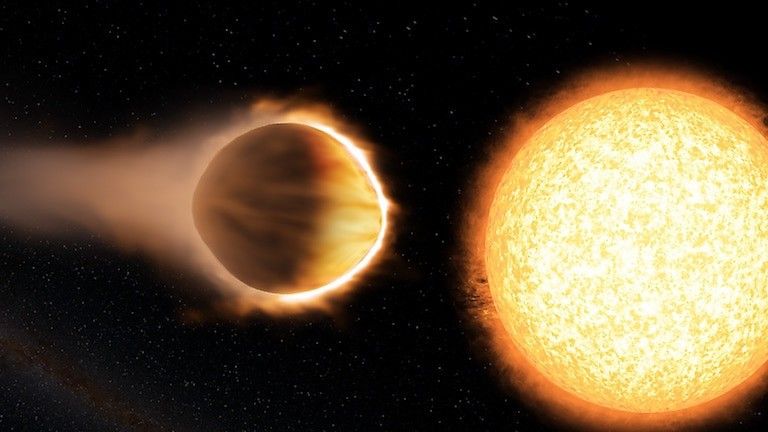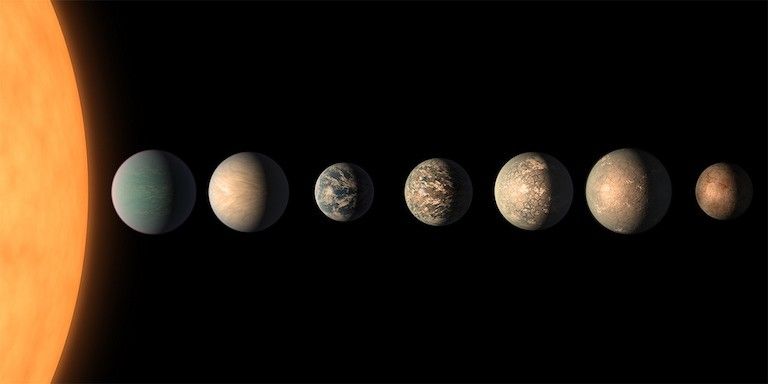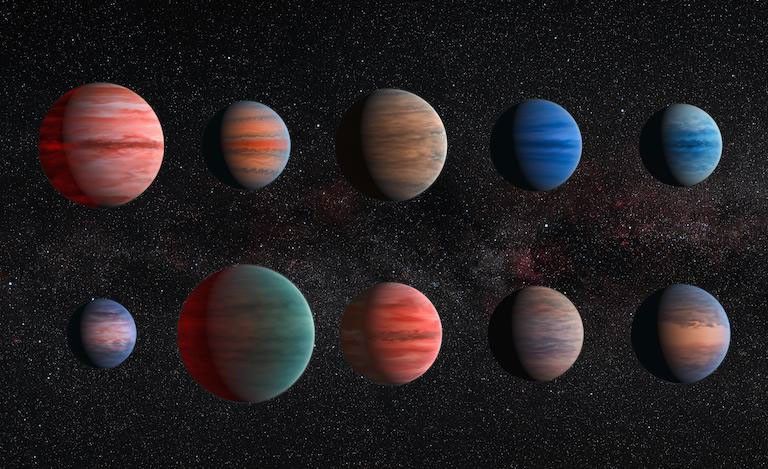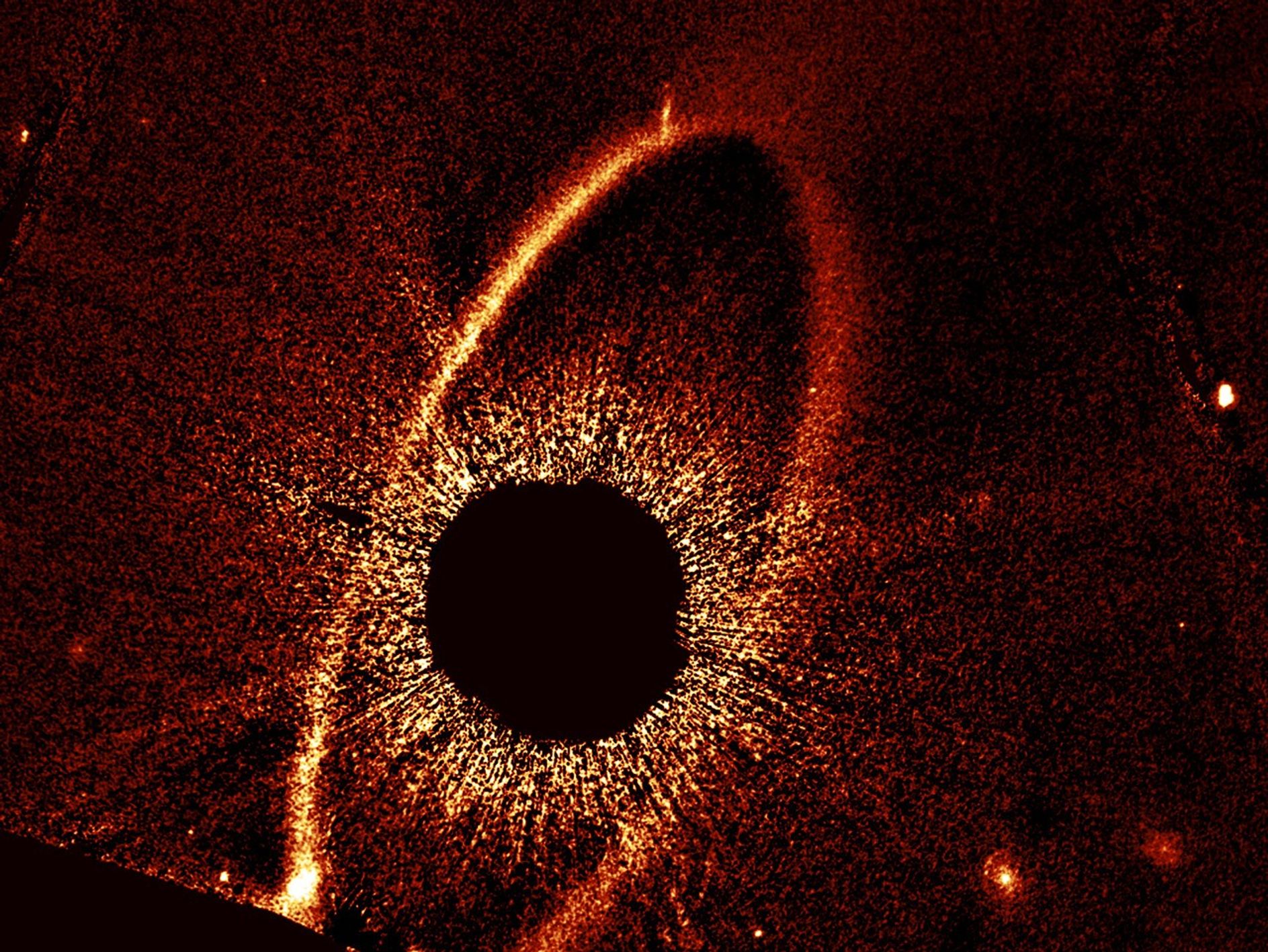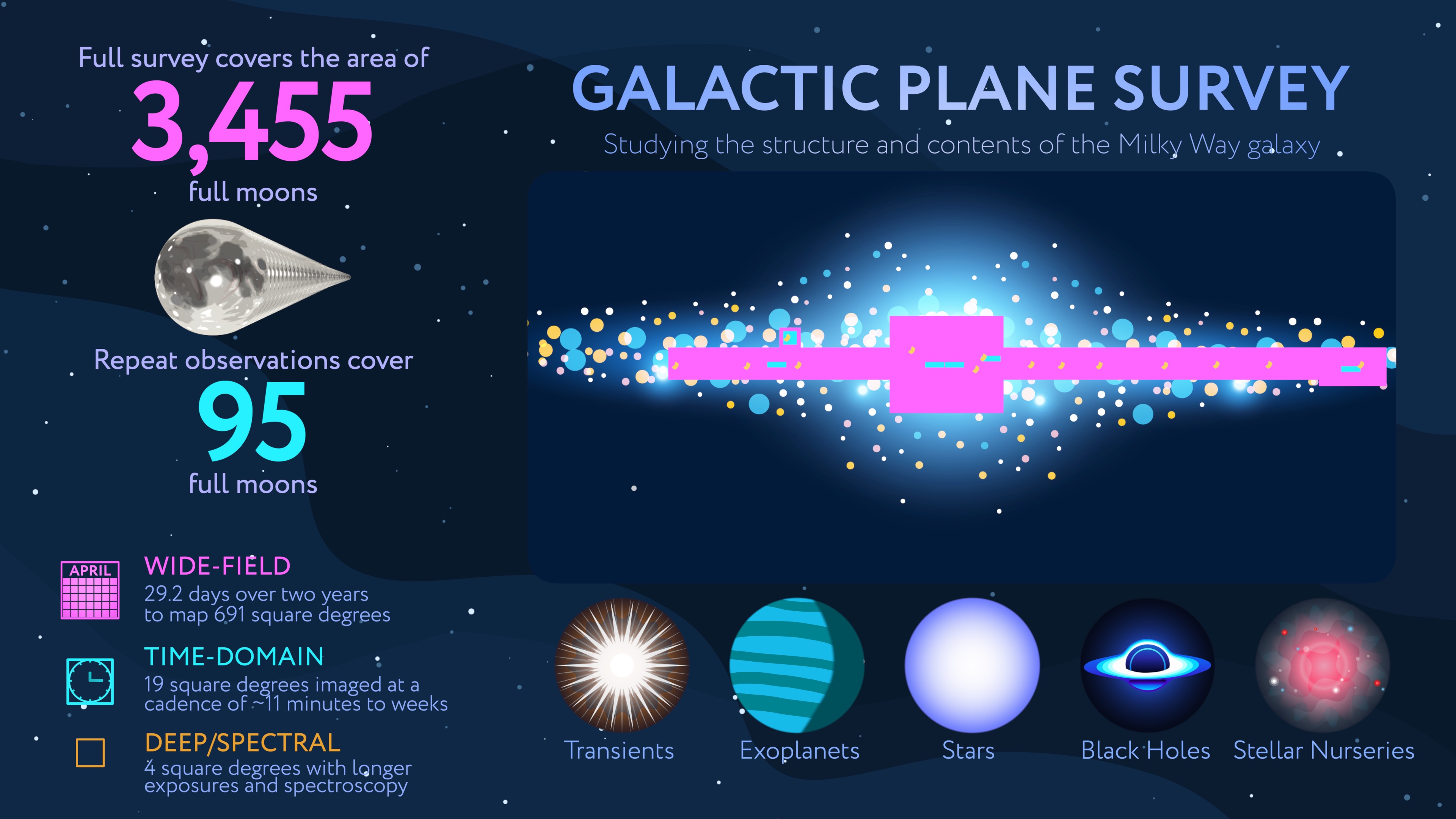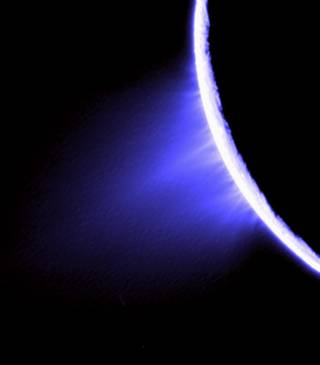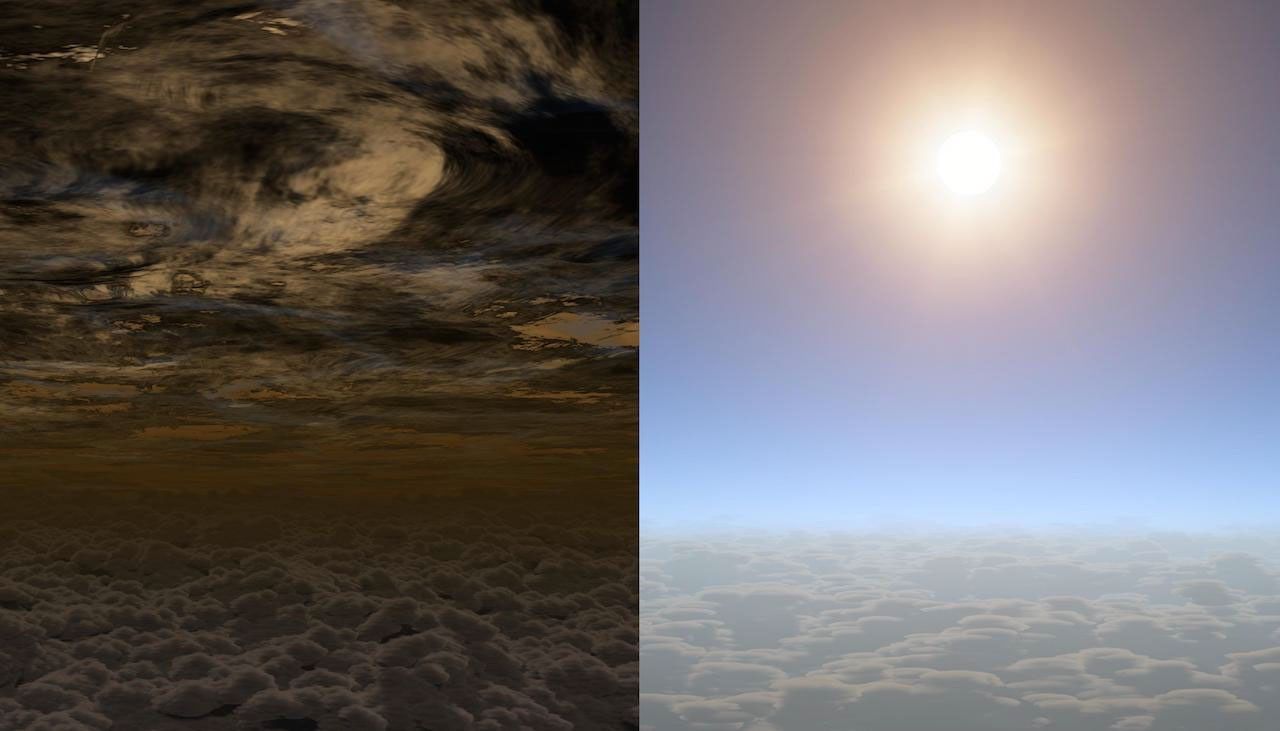
By Pat Brennan, NASA's Exoplanet Exploration Program
We see their shadows but they dance just out of reach: thousands of planets lost in the glare of their parent stars.
Sifting these planets for signs of life will mean capturing light from their atmospheres, splitting it into a rainbow spectrum, then searching those color bands for traces of familiar skies. The big prize: a readout from a small, rocky world showing something like oxygen, methane and carbon dioxide. An atmosphere that reminds us of home; a solid case for life beyond Earth.
We’re at the bare beginning of our ability to probe these otherworldly skies and search for life signs – what the scientists doing the hunting call “biosignatures.” Our instruments so far are somewhat crude. We can break down the light from big, hot planets, roasting gas giants hundreds of light-years away, and read some of their atmospheric properties. Smaller planets are beginning to be analyzed as well. In the years ahead, far more sensitive instruments sent into space could measure light from Earth-sized worlds to inventory their atmospheres, perhaps finding evidence of a living, breathing planet.
But to set the stage for these future discoveries, much work must be done on Earth and in our own solar system. NASA scientists are creating computer models of exotic, exoplanet atmospheres, based in part on our understanding of Earth’s atmosphere, and of worlds closer to home: Mars, Venus, Jupiter and Saturn, and even the cold, smoggy skies of Saturn’s moon, Titan.
Along the way, we’re learning more about our home planet as well as others sprinkled across the galaxy; the scientists who study Earth and these far-off exoplanets are learning to work together.
“It’s an exciting time to be involved with exoplanets,” said Tiffany Kataria, an exoplanet research scientist at NASA’s Jet Propulsion Laboratory in Pasadena, California. “I was glad to enter the field when I did.”
Kataria creates computer models to better understand the atmospheres of large, gas giants. She says early results are revealing some of the structure and components of these atmospheres, such as helium in the scorching skies of a “hot Jupiter” called WASP-107b.
Both instruments and modeling are improving rapidly. Technological progress on space and ground-based telescopes, by one recent estimate, could bring detection of a habitable exoplanet atmosphere by 2030.
But even as the vision of their telescopes grows sharper, exoplanet scientists have come to realize that environment – and history – matter.
Finding evidence of life on other worlds will require knowing what we’re looking for; that, in turn, means understanding not only how planet Earth formed but where it came from, the nature of its planetary neighbors, and how the Sun and other stars determine properties of the planets they rule.
“Now is the time for those of us with solar system backgrounds to use our expertise studying the solar system and apply it to studying exoplanets,” said Victoria Meadows, a University of Washington professor who is also principal investigator for the NASA Astrobiology Institute’s Virtual Planetary Laboratory.
Pictures from home: know our system, know others
Meadows and her fellow researchers are opening a wide aperture on exoplanet studies, going well beyond modeling otherworldly analogs of Earth.
“We take it one step further: the solar system as an analog for (other) planetary systems,” she said.
Take Venus. The hellish, roiling atmosphere might once have been benign, maybe even habitable.
“Venus is a negative example for us,” she said. “The process that caused Venus to lose habitability was a runaway greenhouse.”
Venus’s fate as a barbecued planet – with a high-pressure atmosphere, clouds of sulfuric acid and a surface hot enough to melt lead – might have lessons for us about other terrestrial planets far beyond our solar system.
Among them are the seven Earth-sized planets orbiting a small, red-dwarf star called TRAPPIST-1. The tightly packed system 40 light-years away offers a “wonderful experiment,” she said, on the effects such stars have on planets in close orbit around them.
Red dwarfs, or “M-dwarfs,” flare with powerful bursts of radiation early in their lives.
“Do they have atmospheres?” Meadows asks of the TRAPPIST-1 planets. “Did anything survive that process? Are they (carbon dioxide) dominated, like Venus, or oxygen dominated?”
Venus – an early favorite of Meadows’, who studied the planet as a post-doctoral researcher – likely lost an ocean to evaporation early in its history.
“Look at Venus, what happened to this world,” she said. “If it did lose an ocean, what happened to it? This is the kind of question we should be asking about TRAPPIST-1 and Venus.”
To lay further groundwork in the search for life, exoplanet scientists must peer through time as well as space. What might Earth have looked like to distant observers when it was, say, a quarter of its present age – only about one billion years old?
Life likely was present on the infant Earth, but did not rely on oxygen, which was not yet a significant part of its atmosphere.
Weird worlds ‘like nothing we’ve ever seen before’
And exoplanet scientists must try to understand not only the familiar – Earth and its solar system siblings – but the wildly unfamiliar as well.
“The more precise our measurements get, the harder it is getting for our models to fit,” said Laura Kreidberg, an exoplanet researcher at Harvard University’s Center for Astrophysics.
There’s no reason to think the atmospheres of exoplanets will be any less complicated than Earth’s, she says. Many are likely to be cloaked in thick haze, like Saturn’s moon, Titan. Some might be heavy with oxygen but possess no life at all.
A few could be so spectacularly hot they harbor clouds of vaporized rock.
While the study of exoplanets has revealed that worlds in Earth’s size range are common in the galaxy, their atmospheres could be very different.
“In many cases, exoplanets look like nothing we’ve ever seen before,” Kreidberg said. “Different temperatures, different mass, different rotation rate. A lot of them are tidally locked, irradiated continuously on one side rather than rotating.”
Kreidberg is co-author of a recent paper detailing a surprising observation for a type of planet known as an “ultrahot Jupiter.” They’re gas giants like our Jupiter, but orbiting so close to their stars that their atmospheres are infernos.
Kreidberg and her team used the Hubble and Spitzer space telescopes to examine one of them, WASP-103b.
“One thing that is puzzling about ultrahot planets is the mysterious absence of water,” Kreidberg said. Water appears to be everywhere, including on planets just a bit less massive than these ultrahot Jupiters. Why not on WASP-103b?
The scientists used spectroscopy – fingerprinting various types of molecules in a planet’s atmosphere by the effect they have on light – to check the behavior of water molecules. They found that water acts very differently on the day-side of this broiling planet, the side that is forever locked in place, facing its star.
“It’s so incredibly hot that water is dissociated – it breaks up on the day side,” Kreidberg said.
The water’s hydrogen and oxygen atoms are torn apart from each other, a process previously thought to happen only in the atmospheres of stars.
“The water dissociated on the day side is blown around to the night side by wind,” Kreidberg said. “Then it recombines to form water. It comes back around, and is dissociated again. It’s a really violent life cycle of a water molecule.”
For now, the spectroscopic capabilities of Hubble, while good enough to reveal the bizarre death and rebirth of water molecules on distant hot Jupiters, are too blunt to resolve the atmospheres of small, rocky worlds that might turn out to be something like Earth.
The future: using light to probe atmospheres
The James Webb Space Telescope, scheduled for launch in 2021, should be sensitive enough to pick apart the spectrum of light from the atmospheres of super Earths or mini Neptunes – planet sizes that are common in the galaxy but strangely absent from our solar system.
The Webb telescope might also be trained on the TRAPPIST-1 planets, potentially reading which molecules are present in their atmospheres.
NASA scientists and engineers are, in the meantime, already hard at work designing future generations of space telescopes that should, at long last, lay bare the skies of other Earths.
And even in the nearer term, the Webb telescope’s discoveries seem sure to transform our understanding of exoplanet atmospheres.
“Everything is going to change completely in the next five years,” Kreidberg said. “I have no idea what to expect – none – which is a really exciting place to be.”



























